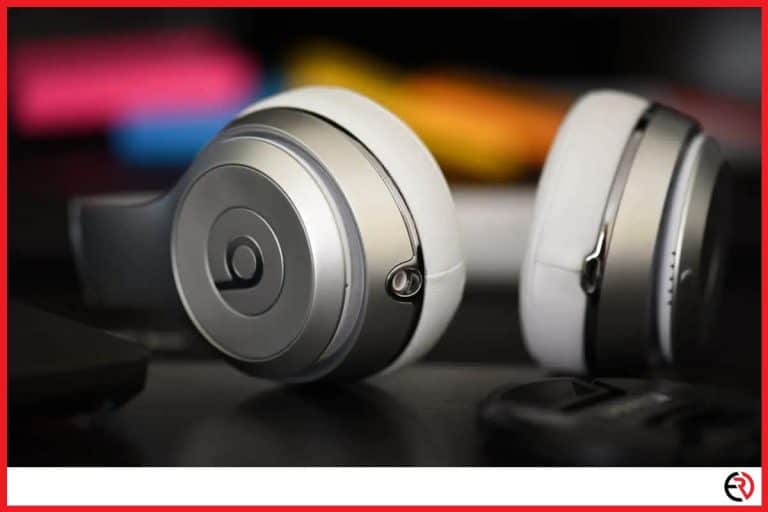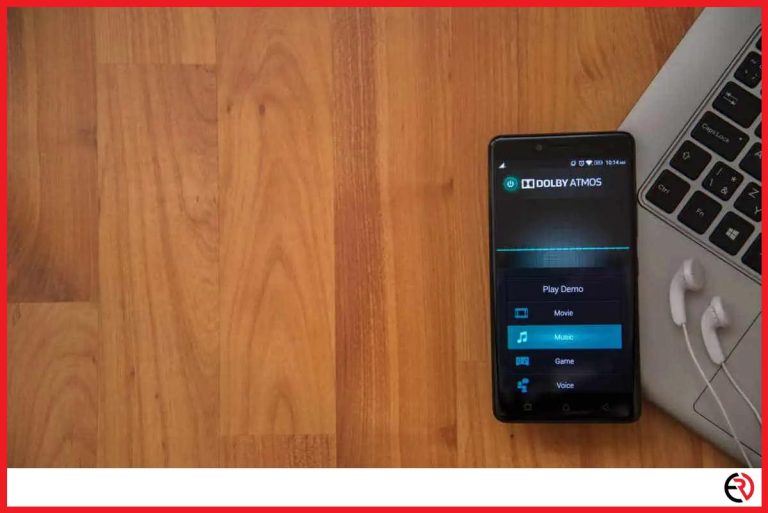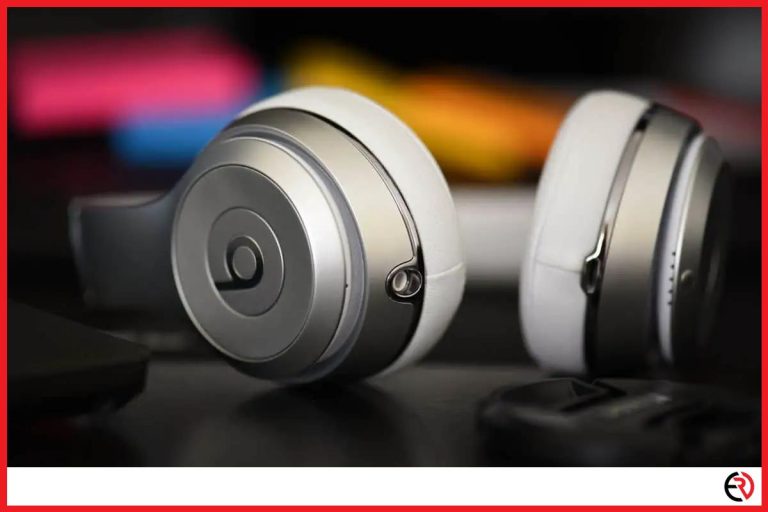Can Headphone Amp Damage Headphones? (And how to avoid it)
This post may contain affiliate links which means that, if you choose to make a purchase, I may earn a small commission at no extra cost to you.
This is a question that has plagued every music lover all across the world. The question that everyone is wondering but is too afraid to ask outright. I have spent quite a while pondering about this topic and after a few days of online research, here is what I’ve uncovered. So, do headphone amplifiers damage headphones?
Yes, headphone amplifiers can damage headphones. When you connect the headphone into an overpowered amplifier and crank it all the way up, the amp will overcharge the speakers in your headphone. It delivers more power than required, thereby damaging the device in the process.
Let’s take a deeper dive into the topic and see how exactly sound waves can damage a hundred-dollar headphone speaker.
Various ways amplifiers can damage headphones
Plugging headphones into a power amplifier’s speaker output
Most people assume that a power amplifier sounds much better than a regular headphone amp. However, that’s far from the truth. With the proper setting, both may offer a similar sound quality.
However, headphones have much lower energy requirements compared to actual speakers. The drivers on these devices are much smaller and require only a little bit of electricity to work efficiently. The maximum input power for most headphones is measured in milliwatts (mW) which is way lower than actual speakers.
Speakers require a lot more energy, usually a few to a hundred watts (W) which makes sense because of their bigger drivers. So, you’re practically signing a death warrant the moment you insert your headphones into the speaker outputs of these amps.
Using an overpowered amplifier
Impedance is the golden word you should consider every time you are picking an amp for your headphone. Now before I discuss how to match impedance ratings, here is an invaluable tip. Just about any headphone amp is capable of powering any headphone without any issues whatsoever.
You can take the biggest most expensive amplifier you find on Amazon and plug in your stock $10 headphones and it will work just fine. However, you have to maintain the volume at a reasonable level. Otherwise blasting it way out of proportion will hurt your dear headphones.
Still not assured? Here is a quick way to make sure if an amp is suitable for your headphones.
- Find out your headphone’s impedance.
- You’ll notice that it’s measured in ohms which signifies the headphone’s electrical resistance.
- Next, search for the impedance on your amplifier.
- The impedance of most headphone amplifiers falls within a range of 16-600 ohms.
- As long your headphone’s impedance is within the aforementioned range, you are good to go.
If you are still not assured and want to precisely control the amount of power that goes into your precious headphones, you can follow the Rule of Eighths.
- Note the impedance on your headphones and divide it by eight.
- The resulting number is to be the ideal output impedance of your amp.
For instance, if your headphone has an impedance of 32 ohms, you should buy an amp that has an output of 4 ohms.
How to prevent amplifiers from damaging your headphone?
Here are a few tips that will help you pick the perfect amplifier for your headphones:
1. Pick the right amplifier– As I discussed earlier, many people end up buying overpowered headphone amplifiers, and here is what you need to do to make sure you are not in the same boat.
- Know the impedance rating of your headphone from the product page, spec sheet, or manual.
- Next, find out its sensitivity rating.
Once you have both numbers you can use them to calculate the power required to drive the headphones. Here is a calculator to help you compute the values.
Here is an example that demonstrates the power requirements of a headphone:
| Desired volume | 95 dB |
| Voltage requirement | 3.98 mW |
| Current requirement | 0.3890 volts RMS |
| Power requirement | 10.24 mA RMS |
Once you have the numbers it’s time to go shopping for a brand new amplifier. Sometimes you may not find an amp with the exact power rating. In that case, pick one that’s closest to your requirements. Even a bit higher rating will do as well.
2. Learn to differentiate between speaker and headphone output– Most amplifiers’ DACs and audio interfaces come with both speaker and headphone output. I have lost track of the times when a friend or a colleague accidentally fried their Bose headphones by plugging them into the speaker output.
The speaker output dishes out too much power which will fry the voice coil of headphones in a matter of seconds. So measure twice and cut once. Always double-check if you are on the right port.
F.A.Q.
Can loud music damage headphones?
Yes, you can damage headphones with loud music. Depending on the exposure, the damage can range from a busted transducer to a fried voice coil. The precursors to these are severe distortions, even on low to moderate listening levels. Stop the music immediately to prevent irreparable damage.
Are tube headphone amps better sounding compared to solid states?
It’s a matter of personal preference. Tube headphone amps color sound differently. They increase the overall warmth of the audio. Now most audiophiles do not prefer such modulation so you would have to listen to it first to know whether it’s for you.
How can you know if your amp will hurt a pair of headphones?
You would have to dig up the spec sheet of the amplifier and the headphone and compare their impedance and power rating. However, in most cases, any headphone works with an amplifier. Simply start off at zero and work your way up. You will be fine as long as you don’t crank the volume too high.
How can you tell if your headphones are too loud?
The best way to determine if your headphones are too loud is via a small experiment. It involves isolating your ears from all sources of noise for at least two days and then listening to your headphones.
Here is how you can do this little experiment:
1. Find the quietest room in your house and spend two days cooped up in there.
2. Use earplugs to block out noises and concentrate on your breathing.
3. You will notice a silent high-pitched ‘ring’ in your ears. This is the ‘base level’ of your hearing damage.
4. If your hearing is damaged, the ringing will gradually get louder.
5. At the end of the two-day period, start listening to music as usual.
6. At the end of the day, go back to your room and put in your earplugs.
7. If the ringing is louder than your ‘base level’ day then your headphones are too loud.
8. Adjust your amp accordingly to keep the loudness in check.
This took me a while to do, but in the end, I am glad I did it because my amplifiers were indeed too loud and were hurting my ear. I can now safely adjust the volume knowing what my baseline is.
What damage can be done to low impedance headphones by connecting them to high-output impedance amps?
You will be fine as long as you keep the volume down on the amp, or maybe even lower the audio source a little bit. Increasing the volume way beyond proportions will inevitably damage the headphone drivers.
Does a headphone amp change only the loudness of the sound or does it also affect quality?
Headphone amps not only affect the loudness but also affect the overall sound quality. Almost all headphone amps sound different and tend to color audio in a unique way. Underpowered headphones will sound bad, and overpowered ones will sound all distorted and garbled.
Conclusion
Amplifiers can damage your headphones if the supply is higher compared to the maximum power input. To prevent permanent damage, make sure not to listen on full volume and gradually increase the sound while being on the lookout for distortions. Good luck!







